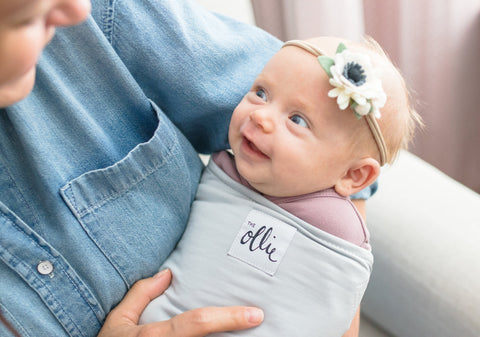
Raising children is a difficult task, and there is unfortunately no rule book to follow when it comes to parenting. Parents and caregivers rely on advice, research, and their own learning curve. There are some constants, though, such as the benefits of positive interactions between a child and his or her parent or caregiver. This yields a more positive outcome for the child, with favorable results witnessed in all stages of development.
Though the impact is lifelong, it can also be seen immediately. For example, a baby who has his or her needs met in a timely manner -- such as feeding, changing, or holding and soothing -- is able to form an attachment. These positive interactions with caregivers act as a foundation for healthy growth. Once the bond of affection is met within the baby's immediate circle, he or she learns that they can trust the outside world. These positive exchanges are crucial to developing strong relationships. Older children who receive positive interactions from caregivers also exhibit higher self esteem, better performance in school, and a lower risk of negative outcomes such as depression or drug use later in life.
What does this entail? How can parents provide the building blocks for the healthy development of a child? Daily interactions with children usually fall under three main categories: cognitive and emotional, physical, and social and lingual. Here are some of the best ways you can develop this strong, healthy attachment with your little one.
Respond quickly and warmly to your child: Signs of distress, such as crying or tantruming, should be responded to in a manner that matches the child’s level of anxiety. For example, the response to a tantrum over dropping an anticipated snack would entail a different reaction than to a child who was hurt.
Focus on social and emotional cues. Sharing positive experiences is just as important as noticing when a child is upset. Additionally, when a child is too excited and cannot contain his or her emotions, a parent should focus on helping them calm down and regain composure. Regulating these strong emotions, whether positive or negative in nature, helps the child to figure out what is socially and emotionally acceptable.
Build a warm and positive relationship. This can be done both visually and audibly by smiling often at the child, using their name in a positive manner, and making affirmative comments.
Provide a routine. A caregiver sticking to a routine allows the child to anticipate what's next and supports the child’s self-regulation. A child who has a routine can relax -- they are not spending time and energy wondering what will happen next and can fully explore their surroundings instead.
Set limits. This allows the child to learn which behaviors are acceptable with consistent guidelines. Parents need to focus on affirmative interactions because younger adolescents can’t comprehend negative statements. For example, saying “no” instead of redirecting and explaining will not teach the child what is incorrect with their behavior. Additionally, telling them to “stop jumping” may in fact encourage jumping because they cant understand the negative connotations.
Encourage object exploration. For infants, position objects so that they can grab and play with them. For toddlers, work on how to make things move, how objects fit into space, and how to sort them.
Play and pretend with your child. Focusing on the healthy development of a child can be fun! As play evolves from basic sensory-motor play to pretend play, get involved and demonstrate how to structure and extend play to a higher level. Using your imagination allows them to use theirs.
Teach by example. Demonstrate how to solve a problem, then provide progressively less support as the child learns. This technique is useful for everyday problem solving as well as social interactions such as sharing toys and space with other children. Experts refer to this as scaffolding.
Give choices. This allows the child to weigh his or her options and understand the consequences. Parents can teach when and how to make choices and should begin by limiting the selections and helping to make the decision. Giving choices in situations allows the child to feel like they have a voice and a part in the decision making.
Focus on warmth. How the caretaker communicates both feelings for and with the child alongside a nurturing touch affects the child’s own behavior — both positive and negative — towards others. Warm interactions usually involve some combination of smiling, praising, positive facial expressions, tone of voice, and affirmative comments.
READ! This is an incredibly important facet of a person’s childhood. Experiences with books from birth to age three can have an incredible impact. Language development by way of different narratives, a more diverse vocabulary, and more complex language structure is affected by exposure to reading. When a parent reads to a child, their language is often more complex than in everyday conversation.
Caregivers need to be both available and sensitive to a child’s emotions -- frequent interactions that are positive in nature begin to establish stable relationships. These are just a few of the many ways that you can begin to incorporate intentionally positive exchanges into your daily interactions with your child. Even though these interactions are mutual, the adult in the relationship is the one who shapes the relationship and guides the child. A child depends on the caregivers to nurture, love, and support, and if you’re able to integrate this positivity into your parenting style, you can help to shape an emotionally healthy child.
As always, we are always here to offer help and support to you. Please feel free to contact us at care@theollieworld.com with any questions or concerns.

